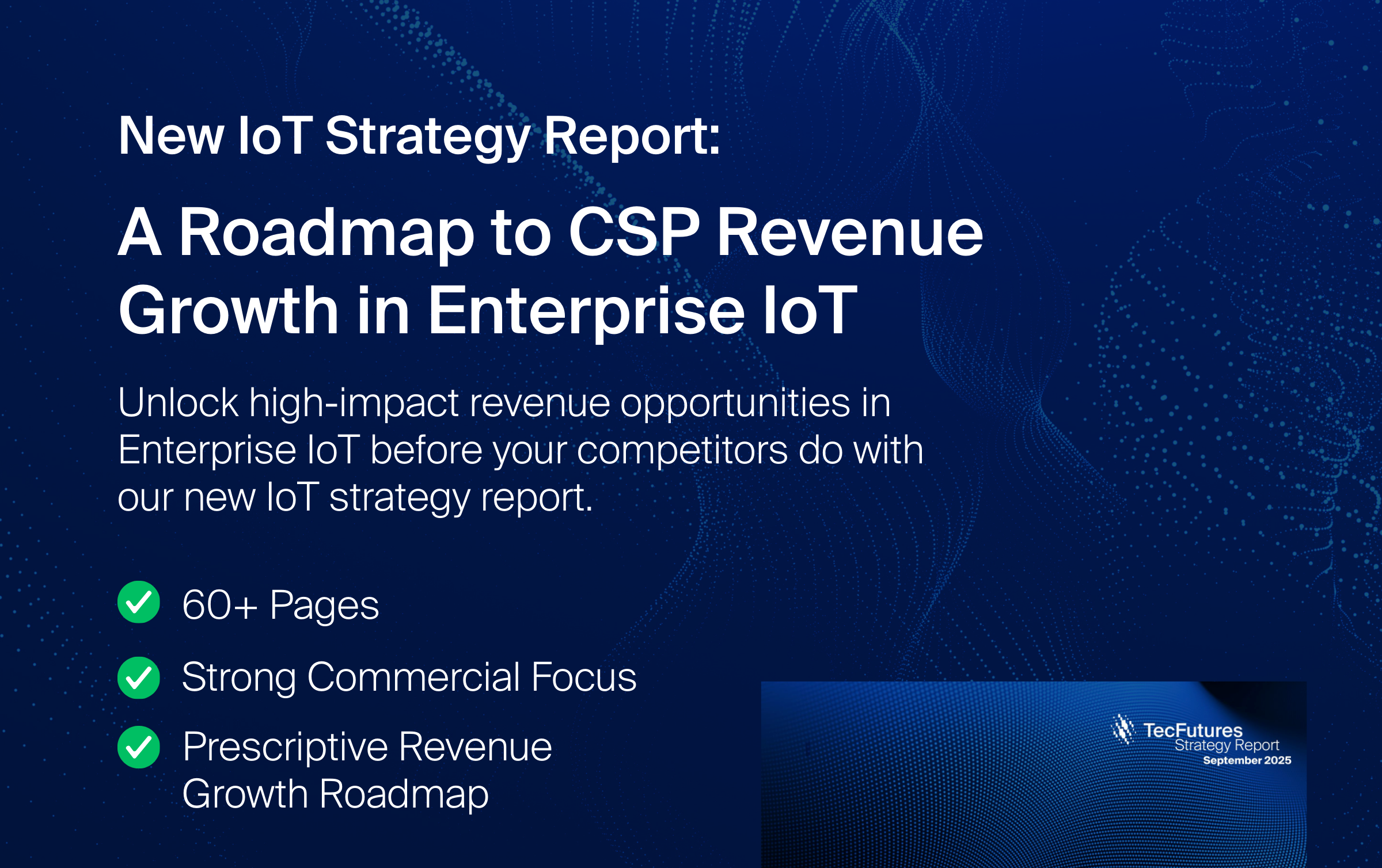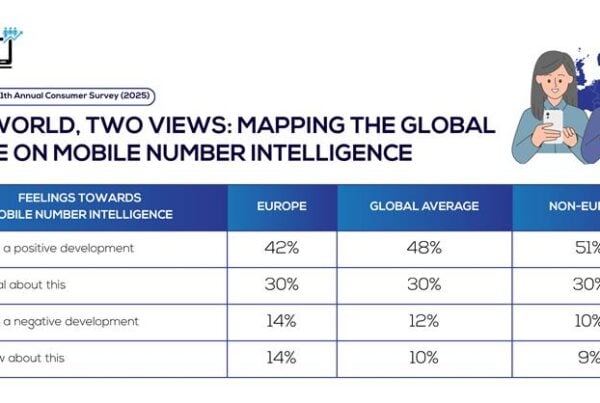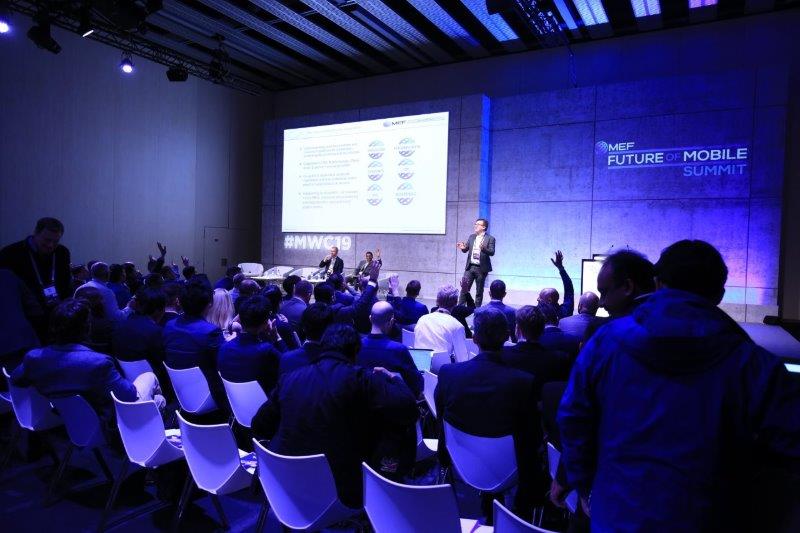Andrew Parkin White, Co Founder of TecFutures, shares insights from the firm’s latest Enterprise IoT Growth Roadmap report, exploring how communication service providers can navigate a rapidly evolving market. The study highlights shifting enterprise needs, emerging technologies, and new commercial strategies that will shape where and how CSPs capture sustainable IoT revenue growth.
The Enterprise IoT Market is undergoing rapid transformation, driven by evolving customer requirements, new technologies, and shifting competitive dynamics.
TecFutures new Market Strategy Report – A Roadmap to CSP Revenue Growth in Enterprise IoT – is based on interviews with twelve leading MNOs and MVNOs alongside extensive independent research and analysis. The report provides a blueprint for IoT CSPs to identify attractive revenue growth opportunities. We focus on how CSPs can transition from connectivity providers into broader value-adding players within the IoT ecosystem, leveraging technologies and commercial models.

The core question that TecFutures focuses on is: Where can CSPs find sustainable revenue growth in enterprise IoT? The answer lies in adopting differentiated sales and marketing strategies and focusing on the enterprise segments where demand will be strongest in the short to medium term.
The core question that TecFutures focuses on is: Where can CSPs find sustainable revenue growth in enterprise IoT? The answer lies in adopting differentiated sales and marketing strategies and focusing on the enterprise segments where demand will be strongest in the short to medium term.“
Strategic Positioning in a Crowded Market
- Growth Strategies
CSPs face a fundamental choice:
• Target high-volume, commoditized segments with standardized solutions.
• Focus on high-value, specialized segments, offering tailored services.
The mid-market is growing, with increasing demand for off-the-shelf solutions paired with tailored customer support. - Consolidation and Agility
Market consolidation, particularly among MVNOs, highlights the need for scale and specialization. Yet, smaller players retain a competitive edge through customer-centric approaches and agility. - Technological Shifts
New technologies such as eSIM, SGP.32 and Edge computing are reshaping competition, lowering entry barriers, and enabling real-time, business-critical IoT applications. These changes can shift power away from traditional telcos towards innovative MVNOs and niche players. - Connectivity Commoditization
Connectivity accounts for around 8% of overall IoT market revenues. CSPs must expand into value-added services, managed solutions, and vertical integration to capture a greater share of the IoT value chain.
Leveraging Sales, Marketing and Technology for Growth
- Use-Case Driven Growth
New opportunities are emerging from vertical-specific IoT solutions, especially for SMBs. By tailoring solutions to industry-specific challenges, CSPs can reduce complexity barriers and accelerate adoption. TecFutures identifies key areas of demand growth over the short to medium term and suggests how CSPs can target these for maximum profitability. - Technology Adoption and Revenue Impact
While many technologies are well known, the revenue implications are often unclear. CSPs must carefully assess the timing and impact of innovations like Edge computing, AI and advanced connectivity standards. Medium-term planning and risk appetite are essential. TecFutures presents a Technology Watchlist to maximize the commercial impact of technology developments. - Sales and Marketing Alignment
Success depends on moving away from one-size-fits-all approaches. CSPs should target high-value customers with differentiated propositions, identify the most promising use cases, and refine marketing efforts. Seven core marketing actions are explained in the full report. - Commercial Strategy
CSPs face five commercial challenges:
• Balancing profitability with competitiveness
• Educating customers
• Managing operational complexity
• Addressing regulatory issues
• Adapting to a maturing market.
The report recommends six value-centric pricing models, plus a watchlist of innovative commercial approaches that emphasize customer value rather than cost.
Developing Revenue Growth Roadmaps
TecFutures outlines a Two-Phase Revenue Growth Roadmap:
- Phase 1: Near-Term Actions (0–12 months)
Immediate measures to unlock short-term revenue, including refining customer targeting, enhancing marketing focus, and introducing value-centric pricing models. - Phase 2: Longer-Term Initiatives (12–36 months)
Strategic actions to avoid “feast or famine” cycles, including investments in emerging technologies, developing vertical-specific solutions, and expanding service portfolios across the IoT value chain.
This phased approach balances the need for quick wins with laying a foundation for sustainable, long-term growth.
Conclusion
The enterprise IoT market represents both an opportunity and a challenge. CSPs face shrinking margins on connectivity and intense competition, but those who embrace strategic positioning, technology leverage, and sales and marketing innovation can secure sustainable growth.
Key to success will be:
- Moving beyond connectivity into value-added services.
- Targeting enterprises with differentiated, industry-specific solutions.
- Adopting value-centric pricing that reflects customer outcomes.
- Aligning sales and marketing with clear customer insights.
- Preparing for the medium-term impact of emerging technologies.
By executing this strategy, CSPs can transition from transactional connectivity providers into strategic partners in enterprise digital transformation, capturing a larger share of the IoT value chain and securing long-term revenue growth.
To learn more, download the free TecFutures Summary Report





